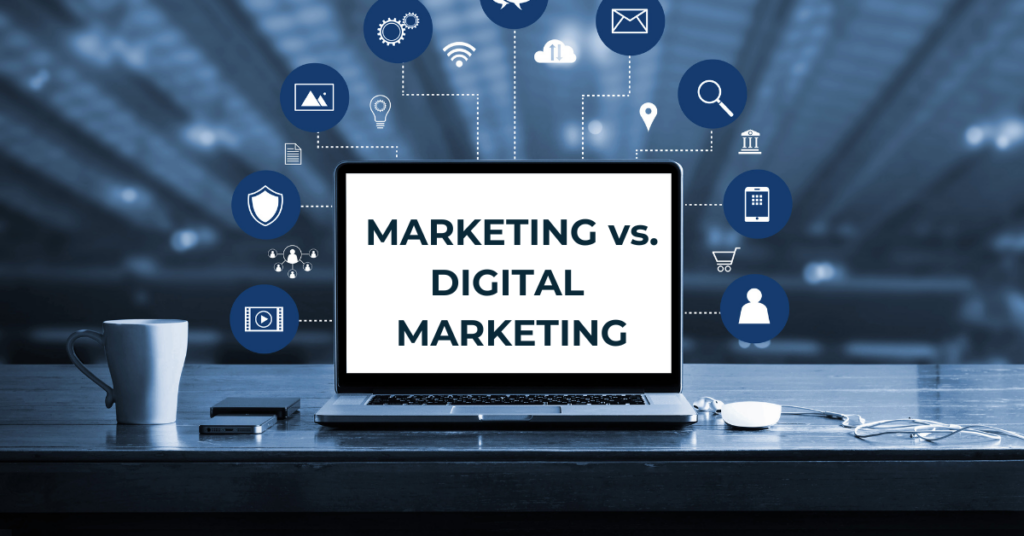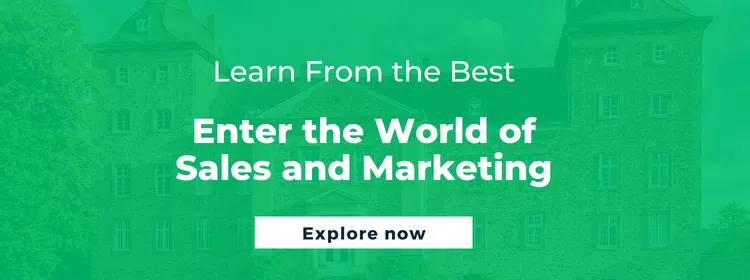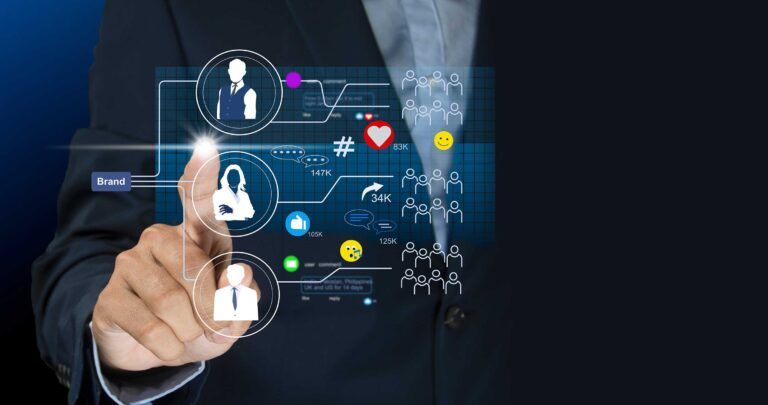Marketing Essential for 2024: Difference Between Digital Marketing and Traditional Marketing

Global spending on digital marketing is on a steep incline, expected to surge from $522.5 billion in 2023 to $836 billion by 2026. This trend not only highlights the growing significance of digital marketing but also brings to the forefront the critical decision businesses face—traditional marketing or digital marketing: which one should they opt for? As companies strive to refine their marketing strategies for maximum impact, understanding the difference between digital marketing and traditional marketing becomes essential.
What are the Key Differences Between Traditional Marketing and Digital Marketing?
Type |
Traditional Marketing |
Digital Marketing |
Channels | Utilizes print media, television, and radio broadcasts. | Leverages online platforms such as social media, websites, and email. |
Engagement | Offers more passive engagement opportunities, relying on consumers’ chance encounters with ads. | Allows higher engagement through interactive content and direct communication with the target audience. |
Measurement | It is challenging to track engagement and conversion rates accurately. | Offers precise tracking and analytics. |
Cost | Generally incurs higher costs due to physical advertising materials and media placement fees. | Cost-effective, often resulting in a better ROI due to lower costs of advertising online and efficient budget allocation. |
Reach | Often local or regional in scope. | Can achieve global reach. |
Customization | Provides broader messaging. | Enables targeting specific audiences with customized messages. |
Speed | Takes more time to launch due to the need for physical ad production and placement scheduling. | Campaigns can be launched quickly, with the ability to make real-time adjustments based on engagement and performance data. |
Return on Investment (ROI) | Often shows a lower ROI due to higher costs and challenges in measuring conversion rates and engagement. | Frequently demonstrates a higher ROI. For instance, email marketing (an aspect of digital marketing) tends to yield 36 times ROI. |
Adaptability | Once an ad is placed, such as in print or broadcast, it cannot be altered at will. | Campaigns can be adjusted in real time based on performance analytics. |
ALSO READ: Top 4 Reasons How a Marketing Course Can Improve Your Knowledge
How do Traditional Marketing and Digital Marketing Impact Consumer Behavior Differently?
The difference between digital marketing and traditional marketing is significantly highlighted in how they shape consumer behavior. Let’s see how:
1. Information Delivery Speed
Firstly, digital marketing delivers information instantly to consumers across the globe. This immediacy accelerates decision-making processes, with digital content swiftly swaying consumer preferences. Conversely, traditional marketing takes a slower route, relying on scheduled broadcasts or print cycles, delaying the impact on consumer behavior. This difference between digital marketing and traditional marketing highlights the importance of speed in today’s fast-paced market.
2. Interactive vs Static Messaging
A point of difference between digital marketing and traditional marketing is that the former thrives on interaction. Social media platforms and websites, for instance, invite consumers to engage, share, and comment, making them active participants. Therefore, consumers feel a part of the brand’s story, influencing their loyalty and purchasing decisions. Traditional marketing, however, often presents a static message that consumers passively receive, limiting the opportunity for immediate engagement.
3. Data-Driven Personalization
Digital strategies leverage consumer data to craft personalized messages, directly impacting the relevance and effectiveness of the ads. Consequently, this strategy boosts consumer satisfaction and conversion rates, distinctly shaping customer behavior towards a brand. Traditional marketing’s broad approach often misses this personal touch. This is another crucial difference between digital marketing and traditional marketing.
4. Consumer Empowerment
Digital marketing empowers consumers to research, compare, and review products online, leading to more informed decision-making. Consequently, this empowerment significantly influences consumers’ purchase patterns. Conversely, traditional marketing provides a more controlled narrative that limits consumer interaction and research.
5. Sustainability and Social Responsibility
Lastly, digital marketing promotes sustainability by minimizing the need for physical materials, aligning with consumer demands for eco-friendly practices. This approach influences consumer behavior, as they increasingly prefer brands to demonstrate social responsibility. Conversely, traditional marketing relies on physical advertisements, facing challenges in meeting these sustainability expectations. This is another key difference between digital marketing and traditional marketing.
ALSO READ: 10 Highest-Paying Marketing Careers for Creative Professionals
What are the Pros and Cons of Traditional Marketing Compared to Digital Marketing?
Digital Marketing
Pros |
Cons |
| Cost-effective: Digital marketing is generally more cost-effective, allowing for efficient budget allocation. | Skills and training: Requires specific skills and knowledge, which may necessitate training or hiring specialists. |
| High engagement: Offers direct engagement with the target audience through interactive content. | High competition: The digital space is crowded, making it harder to stand out without a solid strategy. |
| Measurable ROI: Provides precise tracking and analytics for measuring ROI and conversion rates. | Constant evolution: Requires keeping up with rapid changes in technology and marketing channels. |
| Global reach: Can easily reach a global target audience without geographical limitations. | Ad blockers: Increasing the use of ad blockers can reduce the visibility of online advertising. |
| Personalization: Allows for targeting specific target audiences with personalized marketing channels. | Privacy concerns: Handling personal data can concern users. |
Traditional Marketing
Pros |
Cons |
| High impact: Physical ads, like billboards and print, can have a high impact and are often memorable. | Costly: Generally incurs higher costs for production and placement, affecting budget allocation. |
| Easy to understand: Traditional marketing channels are familiar to a wide audience, requiring no technical knowledge | Hard to measure: Offers less precise measurement of engagement and ROI. |
| Permanent: Physical advertisements can’t be skipped or blocked in the same way digital ads can. | Limited customization: Offers less flexibility in personalizing messages for different target audiences. |
| Local reach: Effective for targeting local markets and building community presence. | Slow execution: It takes longer to produce and distribute, which can delay strategy implementation. |
| Trust: Some target audiences may trust traditional advertising more due to its longevity. | Limited interaction: Provides no direct way for the audience to engage or interact immediately. |
ALSO READ: A Detailed Guide to Understand What is Internet Marketing
How Can Businesses Effectively Integrate Traditional and Digital Marketing Strategies for Maximum Impact?
While there is a clear difference between digital marketing and traditional marketing, both have their strong points. Therefore, by leveraging the broad reach and familiarity of traditional marketing alongside the targeted precision and interactivity of digital marketing, companies can create a synergistic effect that maximizes both awareness and conversion rates. Traditional marketing has a wide reach. This, in turn, can build broad brand awareness. On the other hand, digital marketing’s precision targets specific audiences for engagement and conversion. Integrating these methods allows for efficient budget use, enhancing ROI. For instance, employing intent data with cold calling refines lead targeting, and combining print media with digital nurturing expands audience reach. Additionally, geotargeting with traditional content platforms, direct mail for personalized engagement, and leveraging Account-Based Marketing (ABM) with events can drive conversions. This holistic strategy ensures a smooth customer journey from initial awareness to the final action, leveraging the best of both worlds for optimal results.
ALSO READ: What is Digital Marketing?
What Factors Should Businesses Consider When Deciding Between Traditional Marketing and Digital Marketing?
1. Understanding Your Target Audience
Notably, when strategic decisions are stuck in the debate of traditional marketing vs digital marketing, businesses must consider the habits of their target audience. If they are more inclined toward digital platforms, digital marketing might be the more practical route. Conversely, a predominantly older demographic still values traditional media such as newspapers and television. As such, they might respond better to traditional marketing efforts.
2. Optimizing Budget Allocation for Maximum ROI
Evaluating the budget allocation is essential for achieving the best ROI. For example, digital marketing often offers more flexible and cost-effective options, allowing for precise targeting and measurement. However, traditional marketing can provide broader reach and stronger brand recognition depending on the target audience and target region, which might justify a higher budget allocation in some cases.
3. Aligning Marketing Channels With Goals
Aligning marketing channels with both short-term and long-term goals is vital. For instance, digital marketing quickly adapts to market changes and targets specific segments, making it ideal for short-term objectives. On the other hand, traditional marketing often builds a solid foundation for long-term brand loyalty and awareness.
4. Maximizing Engagement Levels
Choosing the method that maximizes engagement with the audience is critical. For instance, digital marketing allows for interactive and direct engagement with potential customers, enhancing the customer experience and relationship. On the other hand, traditional marketing, while less interactive, can still engage audiences through compelling storytelling and imagery.
5. Prioritizing High Conversion Rates
Finally, prioritizing the approach that boosts conversion rates for the brand product or service is key. For example, digital marketing’s ability to target and retarget specific audiences can lead to higher conversion rates, making it a powerful tool for driving sales and actions. Conversely, traditional marketing’s broader approach might be less efficient in conversion but can be effective in creating the initial interest and awareness necessary for the digital funnel.
If you want to explore the difference between digital marketing and traditional marketing in further detail and learn how to craft business strategies that align with business goals, consider enrolling in Emeritus’ marketing courses and lead your organization toward success.
Write to us at content@emeritus.org





























